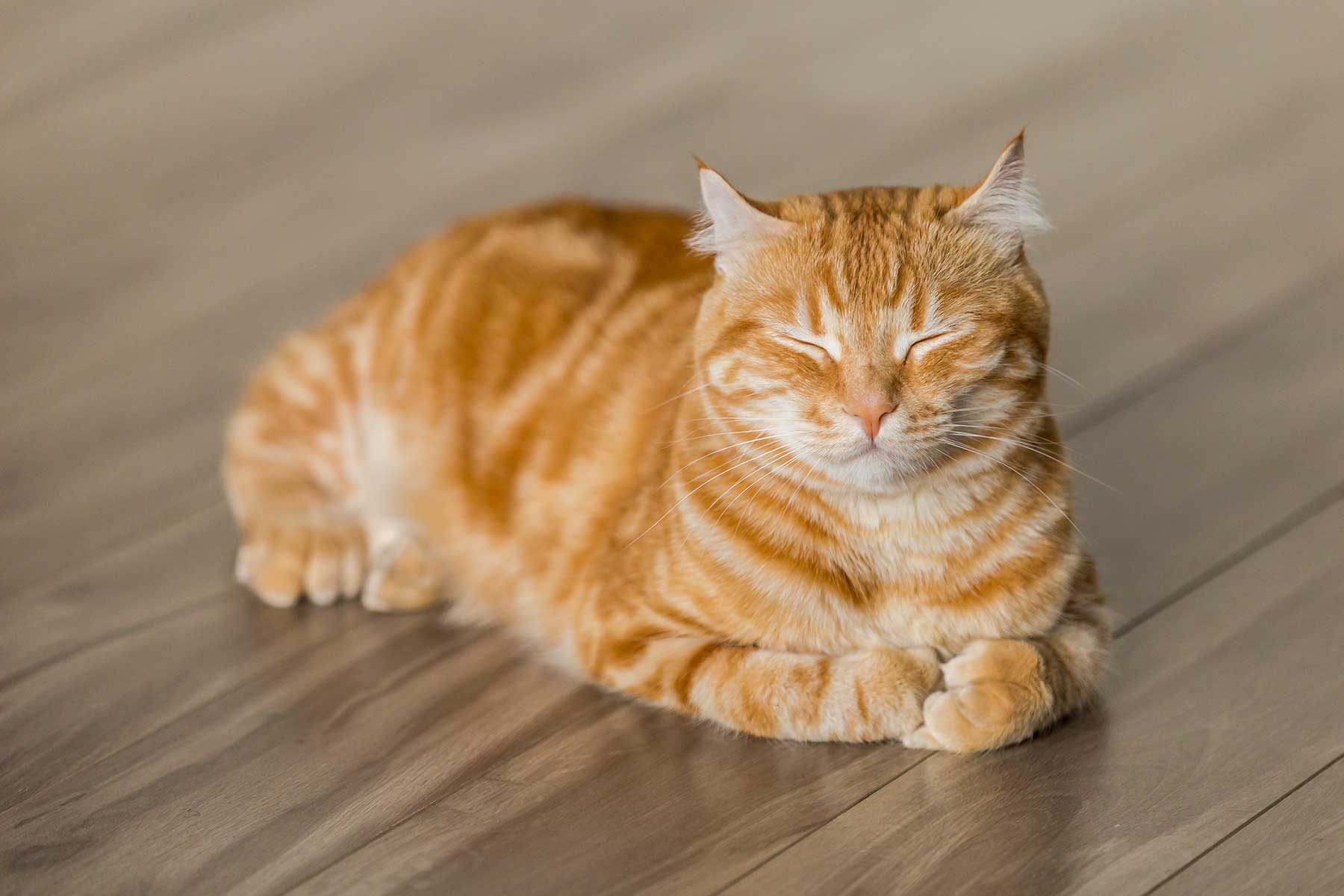What is hyperthyroidism?
Hyperthyroidism is a common disease affecting middle age and older cats. It is caused by an increase in production of thyroid hormones (known as T3 and T4) from enlarged thyroid glands in the cat’s neck. In most cases, enlargement of thyroid glands is caused by a tumour called an adenoma, which is non-cancerous.
Thyroid hormones affect nearly all the organs in the body this can sometimes cause secondary problems. Thyroid hormones stimulate the heart rate and a stronger contraction of the heart muscle. Over time, cats with hyperthyroidism may develop an enlargement and thickening of the left ventricle of the heart. If left untreated and unmanaged, these changes will eventually compromise the normal function of the heart and can even result in heart failure.
Hypertension or high blood pressure is another potential complication of hyperthyroidism and can cause additional damage to several organs, including the eyes, kidneys, heart, and brain. Drugs may be needed to control the blood pressure and reduce the risk of damaging other organs. As in the case of heart disease, after the hyperthyroidism has been successfully treated, the high blood pressure will often resolve, and permanent treatment for it may not be required.
What are the Clinical Signs of Hyperthyroidism?
The most common clinical signs of hyperthyroidism are weight loss, increased appetite, and increased thirst and urination. Hyperthyroidism may also cause vomiting, diarrhoea and hyperactivity. The coat may appear matted or greasy.
How is it diagnosed?
Your veterinarian will conduct a physical examination. Your cat’s neck area will be palpated to check for enlarged glands. Your cat’s heart rate and blood pressure may also be checked. If thyroid disease is suspected, your veterinarian will likely order a blood-chemistry panel as well as a thyroid-hormone level. Most cats with hyperthyroidism will have elevated levels of the thyroid hormone T4 in their bloodstream. A small percentage of cats with hyperthyroidism, however, will have T4 levels within the normal range
Because hyperthyroidism can predispose a cat to other conditions, it is important to evaluate general health, with particular focus on the heart and kidneys. The blood-chemistry panel and urinalysis will help with information about other organs.
What Treatment is required?
There are four options when considering a cat’s treatment for hyperthyroidism: medication, diet, surgery, or radioactive-iodine therapy. Each has its advantages and disadvantages. Generally, the treatment a cat receives for hyperthyroidism will depend on specific circumstances, including heart and kidney function. Concern about kidney failure is a major determinant of the course of treatment, and may eliminate some of the options.
Medication
Anti-thyroid drugs act by reducing the production and release of thyroid hormone from the thyroid gland. These medications do not provide a cure for the disease, but they do allow either short-term or long-term control of hyperthyroidism. The advantages of medication are that the drugs are readily available and relatively inexpensive. Some cats may experience side effects, however, that include vomiting, anorexia, fever, anaemia, and lethargy. Lifelong treatment, usually involving twice-daily oral dosage, will be required and for some owners and cats, that dosage schedule may be difficult to achieve.
Routine blood tests should be done periodically during treatment, to evaluate the effectiveness of therapy, and to monitor kidney function.
Diet
Hill’s pet nutrition has developed a diet low in Iodine (Y/D) that is a complete diet and needs to be fed as the sole food. No extras allowed! Therapy stands or falls with total compliance.
Surgical Treatment
Removal of the thyroid glands-surgical thyroidectomy- is a relatively straightforward surgical procedure that has a good success rate. The advantage of surgery is that it is likely to produce a long-term or permanent cure in most cats, and therefore eliminates the need for long-term medication. This surgery requires general anaesthesia, and there might be added risks if older cats have heart, kidney, or other problems that could cause complications.
Radioactive-Iodine Therapy
Radioactive-iodine therapy is quickly becoming the treatment of choice for cats with hyperthyroidism. During treatment, radioactive iodine is administered as an injection and is quickly absorbed into the bloodstream. The iodine is taken up by the thyroid gland but not by other body tissues. The quantity of radiation destroys the abnormal thyroid tissue but does not damage the surrounding tissues or the parathyroid glands. The majority of cats have normal hormone levels within one to two weeks of treatment.
The advantages of radioactive-iodine therapy are that the procedure is curative, has no serious side effects, and does not require anaesthesia. It does, however, involve the handling and injection of a radioactive substance that is only permitted at facilities specially licensed to use radioisotopes. The radioactivity carries no significant risk for the cat, but precautionary protective measures are required for people who come into close contact with the cat. A treated cat has to remain hospitalized until the radiation level has fallen to within acceptable limits. Usually this means that the cat will need to be hospitalised for approximately three days after treatment. Radioactive-iodine therapy is curative in approximately 95% of all hyperthyroid cases.



